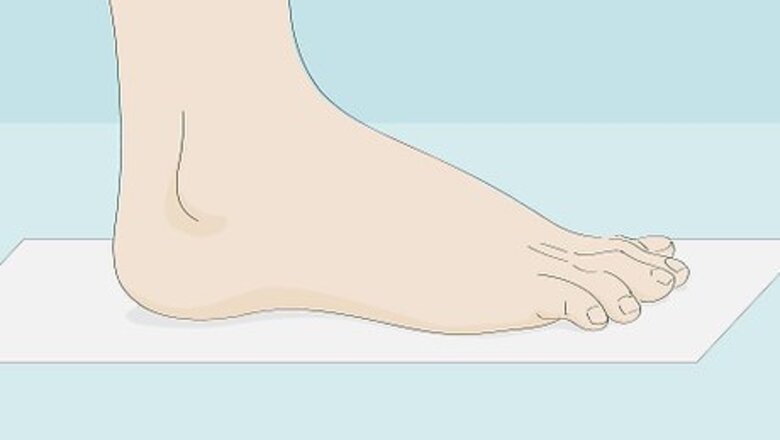
views
Measuring Your Shoe Size
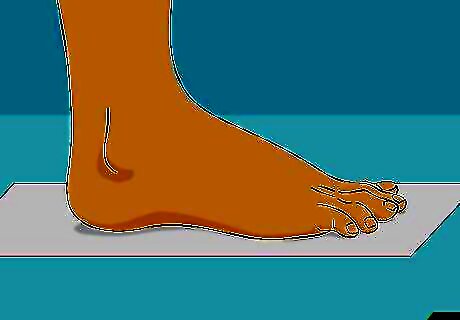
Place your bare foot on a blank sheet of paper. Set a standard-sized sheet of paper down onto a hardwood or concrete floor. Take off your shoes and socks and put your bare foot in the middle of the sheet of paper. Make sure your foot is flat. If you have carpet at home, place a piece of cardboard underneath your sheet of paper to make sure it is flat.
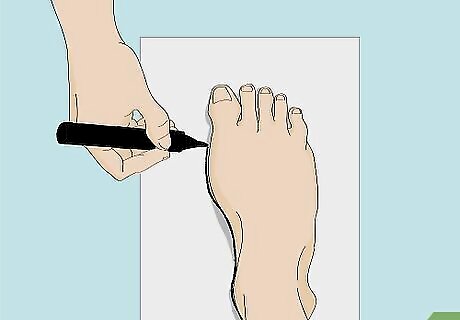
Have a friend trace around your foot with a marker. It's easiest to have someone else do this for you so you can stand how you normally would with your weight spread throughout both feet. Ask a friend or a family member to trace your foot with a dark marker. Make sure they keep the tracing lines as close to your foot as possible. Ask the person tracing to trace each detail of your foot, including in between your toes. If you are worried about getting marks on your feet, use a washable marker.
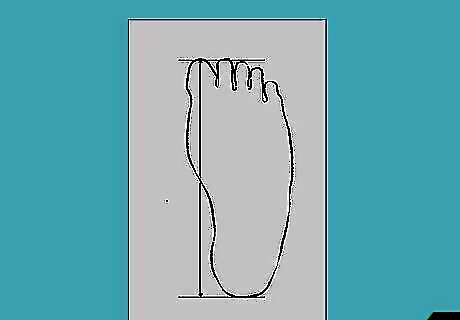
Measure the tracing from toe to heel. Set a ruler on your tracing and note the distance between your longest toe and the back of your heel. Write down the number in inches on a piece of paper to bring with you to the shoe store. For American measurements, the length of your foot in inches determines your shoe size.
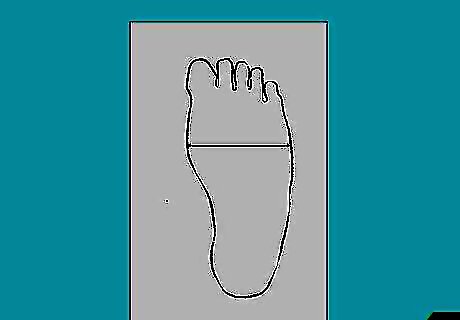
Use a ruler to measure the widest part of your foot. Place your ruler widthwise on the widest part of the tracing. Most often, this is the area just underneath of the toes by the ball of your foot. Note the measurement in inches to look for shoes that are wide enough to fit your feet. Width measurements are not often on a shoe box. Ask the salesperson to look for shoes with your size width.
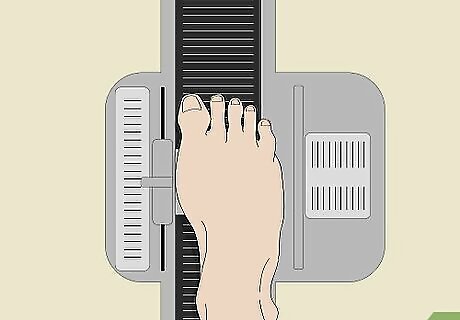
Have your feet measured at the shoe store for more accuracy. Feet fluctuate in size throughout the years, even if you are done growing. If it’s been a couple of years since you’ve had your feet measured, head to a shoe store that provides that service. This will give you an exact number and size to base your next pair of shoes on.Tip: Children should have their feet measured every time they buy new shoes since their feet are constantly growing.
Buying Shoes that Fit
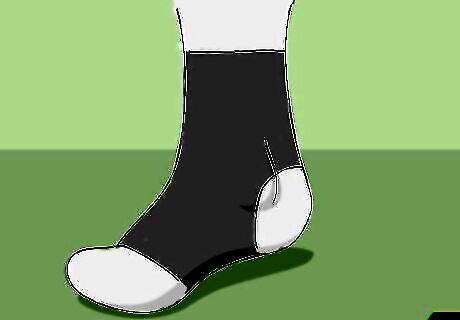
Wear socks that you will wear with your shoes to try them on. Some socks are thicker than others, and they can make your shoes feel bigger or smaller if they aren’t the type of sock you’ll be wearing with your shoes after you buy them. If you are trying on running shoes, wear a pair of athletic socks to the shoe store. If you are buying dress shoes, put on some dress socks before you go. If you are trying on heels or flats that you wouldn’t wear socks with, try them on with the thin socks provided at the shoe store to mimic your bare foot. You should never try on shoes without socks on.
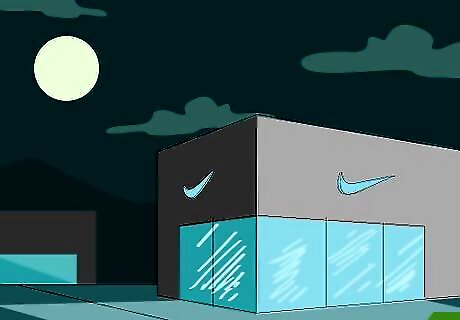
Shop in the evening so your feet are swollen. As you walk around throughout the day, your feet naturally swell up just slightly from the pressure of standing on them. Try to buy shoes in the evening after you’ve gone about your normal day. Your feet will be swollen to their largest size and you can buy shoes that are big enough to accommodate that. If you are pregnant, your feet may swell more. When we wake up in the morning, we're longer and fitter. You want to have the weight on your feet when trying shoes on for a more precise fitting.
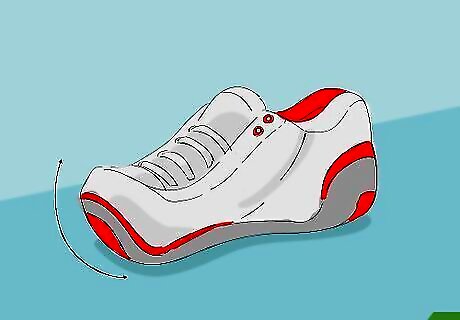
Look for shoes with enough room in the toe box. Shoes with pointed toes are a very common style, but almost no one’s foot is shaped that way. Purchase shoes that have a rounded toe and leave enough width for your toes to spread out comfortably. Pointed toe shoes are fine for special occasions, but they can damage your feet if you wear them too often. Although some people believe that pointed toe shoes can cause bunions, they're actually hereditary, so that shouldn't be a concern when buying shoes.
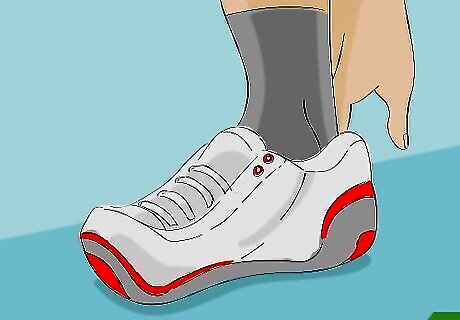
Check the fit at the back of shoes using your index finger. Put on the shoes and lace them up fully. Place your index finger at the back of the shoe. If you can fit your index finger in the back of your shoe comfortably, it is a good fit. If there is not enough room, your shoe is probably too small. Small shoes can cramp your feet and cause problems over time. Shoes may stretch slightly widthwise, but they won’t stretch lengthwise.
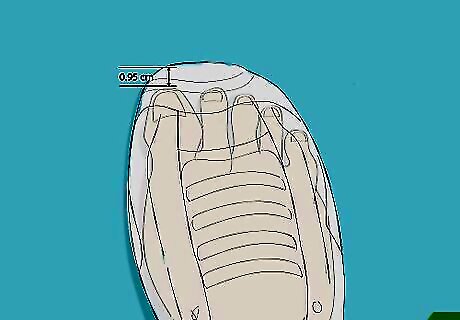
Make sure shoes are at least ⁄8 in (0.95 cm) longer than your big toe. It is important to leave enough room in your shoes for your big toes. When you try on a new pair of shoes, stand up and feel for the room in front of your longest toe. If there is little to no room, your shoes will be uncomfortable and you should find a size up. Your feet naturally scoot forward as you walk. If your shoes are right up against your big toe, it will cause friction that could lead to pain and irritation.
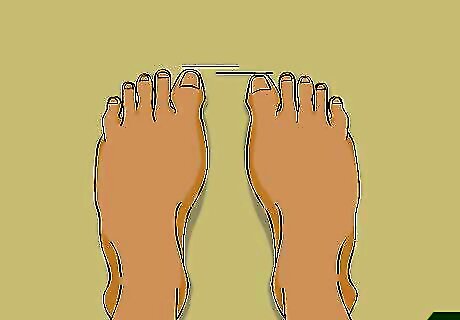
Fit your shoes to your larger foot if they aren’t the same size. Your feet may be slightly different sizes. One foot might be ½ of a size larger or even 1 full size larger than the other. If you have feet that are uneven sizes, buy shoes that fit your larger foot. It is better to wear 1 shoe that is slightly too big than 1 shoe that is too small. If your feet are more than 1 size apart, consider asking if a shoe store will sell you a mixed-size pair of shoes.
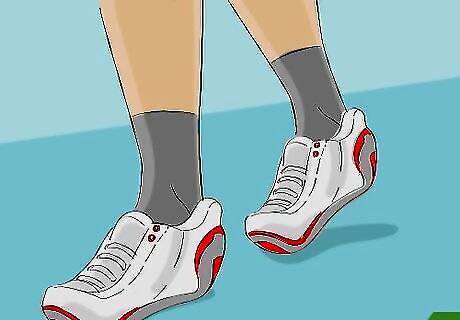
Walk in the shoes before you buy them. The best way to test out a pair of shoes is to take a lap around the store in them. Try to walk at least 50 paces in the shoes before you purchase them. Look out for friction or pinching in your toes or slipping in the heel.Tip: Some shoes need to be broken in before they are comfortable, but they should still fit you from the very start. Remember to do that towards the end of the day to get a better idea of the shoe fit.
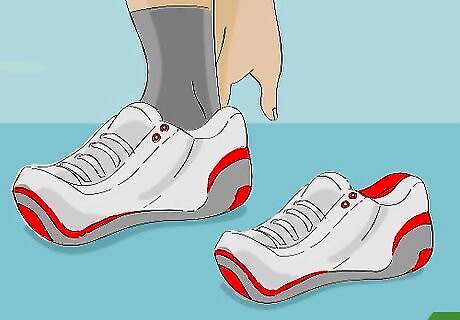
Buy based on fit, not size. If you know you are a size 9 but find shoes that are a size 11 and fit perfectly, don’t size down. Purchase shoes that fit you well and don’t worry about what size they say they are. Different manufacturers have different measurements, so each brand of shoe is slightly different in size. You may also find that shoes advertised as “comfortable” don’t work well for you at all. That’s okay! They may not be made for your foot shape or width.
















Comments
0 comment